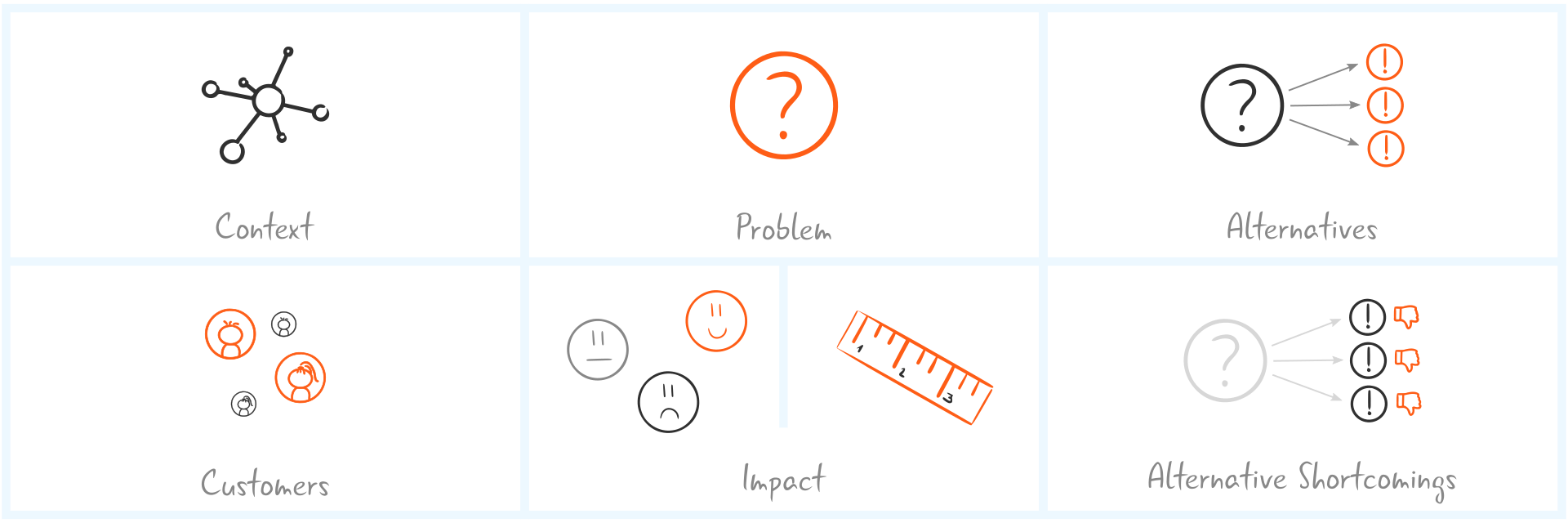
Goal
Description
Instructions
Materials
The Problem Statement Canvas was developed by Marius Ursache. He contributed to the idea of the Problem Statement Canvas with his extensive experience as a startup founder and mentor to a variety of startups and in startup programs including the MIT Global Entrepreneurship Bootcamp, MIT Enterprise Forum, Singularity University, and the Future Innovators Summit. Throughout his years of experience, he identified a recurring pattern among startup founders of focusing too much on the solution itself and optimising it technically. However, he found out that by digging deep into the problem, especially in the early stages of development, a significant reduction in the failure rate can be achieved. The real challenge in any entrepreneurship or intrapreneurship, he believes, is finding the right problem, not building the right solution. Once the problem is properly identified and understood, it is much easier to build the right solution that will lead to corresponding market success.
The impetus to create new solutions originates from identifiable symptoms that bring the deficiencies to light. The Problem Statement Canvas provides a structure that supports the systematic identification of problems. The first step is to look at how to deal with the specific target group. It is important to identify those people and use cases for whom the problem represents a real challenge and for which a solution created in the further development process will provide a real benefit. The Problem Statements Canvas helps to answer important questions about when the problem occurs, what the root causes of the problem are, what the impact of the problem is on the user both quantitatively and emotionally, what alternatives the user has to cope with the symptoms of the problem, and what the disadvantages of these alternatives are for the user.